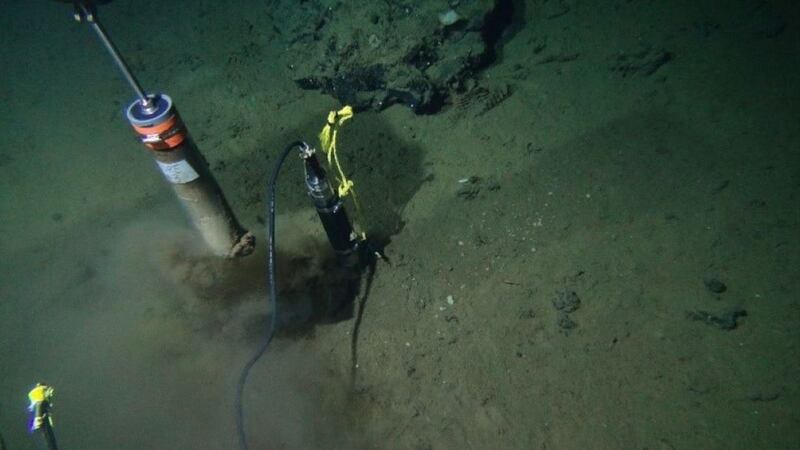Micro-organisms buried in sediment beneath the seafloor can survive on less energy than was previously known to support life, researchers say.
The study has implications for understanding the limit of life on Earth and the potential for life elsewhere, according to the scientists.
An international team of researchers, led by Queen Mary University of London, used data from under the seafloor to construct models that divide the oceans into hundreds of thousands of individual grid cells.
A global picture of the sub-seafloor biosphere was then assembled, including key lifeforms and biogeochemical processes.
By combining information on the distribution and amounts of carbon and microbial life contained in Earth’s deep biosphere with the rate of biological and chemical reactions, the researchers were able to determine the power consumption of individual microbial cells.
This means they were able to look at the rate at which they utilise energy.
All life on Earth constantly uses energy in order to remain active, sustain metabolism, and carry out essential functions such as growth, and the repair and replacement of biomolecules.
Dr James Bradley, lecturer in environmental science at Queen Mary, said: “When we think about the nature of life on Earth, we tend to think about the plants, animals, microscopic algae, and bacteria that thrive on Earth’s surface and within its oceans – constantly active, growing and reproducing.
“Yet here we show that an entire biosphere of micro-organisms – as many cells as are contained in all of Earth’s soils or oceans, have barely enough energy to survive.
“Many of them are simply existing in a mostly inactive state – not growing, not dividing, and not evolving.
“These microbes use less energy than we previously thought was possible to support life on Earth.
“The average human uses around 100 watts of power – meaning they burn approximately 100 joules of energy every second.
“This is roughly equivalent to the power of a ceiling fan, a sewing machine, or two standard lightbulbs.
“We calculate that the average microbe trapped in deep ocean sediments survives on fifty-billion-billion times less energy than a human.”
The research, published in the Science Advances journal, shows that sub-seafloor microbes survive using far less energy than has ever previously been shown to support any form of life on Earth.
By stretching the habitable boundaries of life to encompass lower energy environments, the findings could inform future studies of where, when and how life arose on a hostile early Earth, and where life might be located elsewhere in the solar system, researchers say.
The findings raise questions about our definitions of what constitutes life, as well as the limits of life on Earth, and elsewhere.
The scientists say that with such little energy available, it is unlikely that organisms are able to reproduce or divide, but instead use this miniscule amount of energy for “maintenance” – replacing or repairing their damaged parts.
They suggest it is therefore likely that many of the microbes found deep below the seafloor are remnants from populations that inhabited shallow coastal settings thousands to millions of years ago.
Unlike organisms on the surface of Earth, which operate on short timescales according to the Sun, it is likely that these deeply buried microbes exist on much longer timescales, such as the movement of tectonic plates, and changes in ocean oxygen levels and circulation.
The research also sheds light on how the microbes interact with chemical processes occurring deep below the seafloor.
While oxygen provides the highest amount of energy to microbes, it is in overwhelmingly short supply – present in less than 3% of sediments.
Dr Bradley said: “The findings of the research call into question not just the nature and limits of life on Earth, but elsewhere in the Universe.
“If life does exist on Mars or Europa for example, it would most likely take refuge in the subsurface of these energy-limited planetary bodies.
“If microbes only need a few zeptowatts of power to survive, there could be remnants of extant life, long dormant but still technically ‘alive’, beneath their icy surface.”








